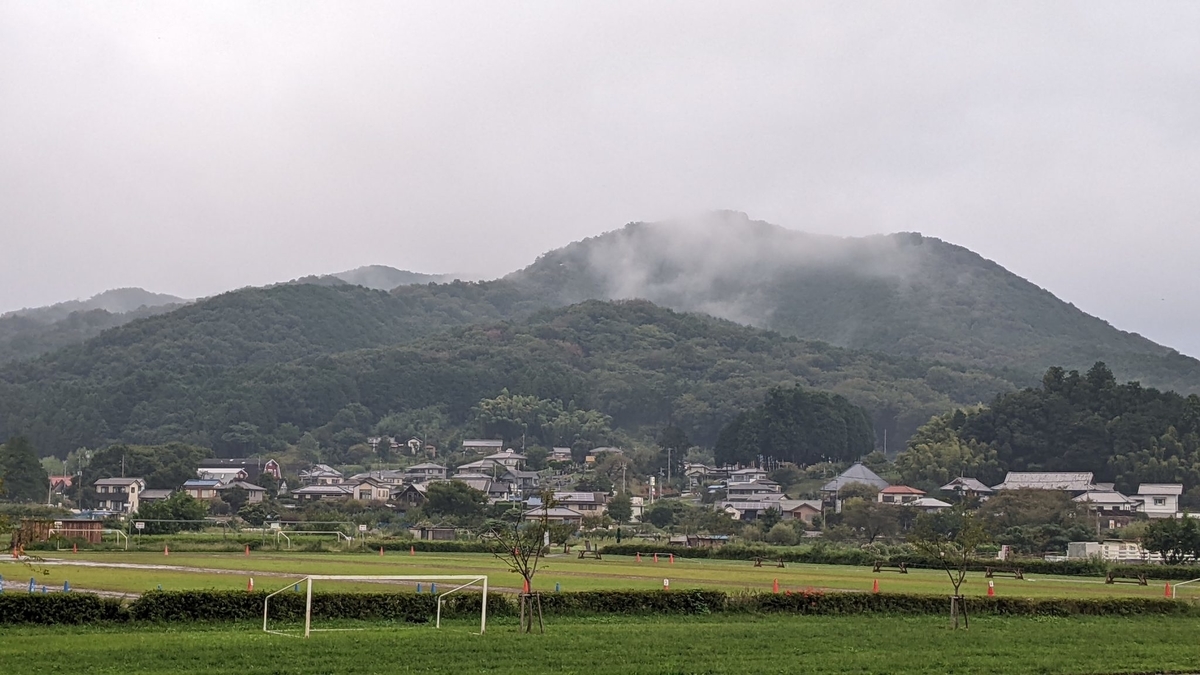巾着田/曼殊沙華/ "Manjushage" & "Hokekyo=Lotus Sutra"

■巾着田(きんちゃくだ)の『曼殊沙華(まんじゅしゃげ)』
埼玉県、日高市の高麗川(こまがわ)河畔の巾着田では、毎年9月下旬から約一カ月間の間、直径約500メートル、面積約22ヘクタールに約500万本の曼殊沙華が花を咲かせます。巾着田は、日高市内を流れる清流、高麗川の蛇行により長い年月をかけて作られ、その形がきんちゃくの形に似ていることから、巾着田と呼ばれるようになりました。
私の訪れた9月25日は、台風一過の翌日で、今にも氾濫しそうな水量で荒々しい河に囲まれた平地に、曼珠沙華が辺り一面真紅に染まり、赤いじゅうたんを敷き詰めたように美しかったです。よく花の命は短いと言われますが、密かに毎年多くの愛好者が、その限られた短い間の花の命の美しさに惹かれて訪れています。



■『曼殊沙華』と『法華経』(ほけきょう)
曼珠沙華は、インド・サンスクリット語では『赤い』を意味し、法華経にも引用される天上の花でもあります。一般的には秋のお彼岸に咲く「彼岸花(ひがんばな)」と呼ばれています。呼び名がたくさんあり、花の時に葉を見ず葉の時に花を見ないので「はみずはなみず」、傘のような形状から「天蓋花」、彼岸に咲くことから「死人花」「地獄花」と呼ばれることもあるそうです。
曼殊沙華が道端に目立つようになると、いよいよ秋になったと言う合図で、日本では、秋のお彼岸の季節に咲くことからその名が付いたようです。実は、仏教の法華経の教えにも「曼殊沙華」として登場する大変に歴史あるお花でもあります。
『法華経』においては、〃この時、天は曼陀羅華(まんだらけ)・摩訶曼陀羅華(まかまんだらけ)・曼殊沙華(まんじゅしゃげ・摩訶曼殊沙華(まかまんじゅしゃげ)を雨ふらして、仏の上及びもろもろの大衆に散ず。〃 (『法華経』序品)
(お釈迦様が瞑想に入られたところで)天から曼殊沙華など4種類の花が、瞑想に入っているお釈迦様やその周りの弟子たちに雨のように降り注いだ。”と言う意味になるようです。
赤い曼殊沙華が天から降ってくるというと、美しく幻想的な風景を思い浮かべますが、雨が降ると次第に地面が濡れて雨水が滲み込んでいくように、お釈迦様の教えが世の中に徐々に広く行き渡った証という意味があるそうです。毎年季節になると咲く曼殊沙華は、今でもお釈迦様の教えが、いつでもそこにあるということを、私達に思い出しなさいと教えてくれているようです。

--------------------------------------------------------------------------------------------------
■"Manjushage" by Kinchakuda
In Kinchakuda on the banks of the Komagawa River in Hidaka City in, Saitama Prefecture, about 5 million “Manjushage” bloom on an area of about 22 hectares with a diameter of about 500 meters for about a month from the end of September every year.
The Kinchaku-da field was created over a long period of time by the meandering Koma River, a clear stream that flows through Hidaka City.
I visited on September 25th, the day after the typhoon had passed, and on the flat land surrounded by rough rivers with water that was about to overflow, red spider lilies were dyed crimson all around, like a red carpet. It was beautiful. It is often said that flowers have a short lifespan, However many fans secretly visit every year, attracted by the beauty of the limited short lifespan of flowers.
■"Manjushage" and "Hokekyo=Lotus Sutra"
Manjushage means "red" in Indian Sanskrit. It is also a heavenly flower quoted in the Lotus Sutra. In general, it is called "Higanbana", which blooms on the autumn equinox. It has a couples of names such as, 'Hamizu Hanamizu' because it doesn't see leaves when it blooms.
They are sometimes called flowers.as 'Canopy Flower' since it's shaped like an umbrella,or called 'Death Flower' and 'Jigoku=Hell Flower' as it blooms on the equinox.
When Manjushage stands out on the roadside, it is a sign that it is finally autumn. Actually, it is also a very historical flower that appears as Manjushage in the teachings of the Lotus Sutra of Buddhism.
It means, ``When Buddha entered meditation, four kinds of flowers, including Manjushage, rained down from heaven on Buddha and his disciples who were in meditation.''.
When we think of red Manjushage flowers falling from the sky, we can imagine a beautiful and fantastic landscape. It seems that whenever Manjushage blooms in every season it is reminded us that the wisdoms of Buddha are always here around us.